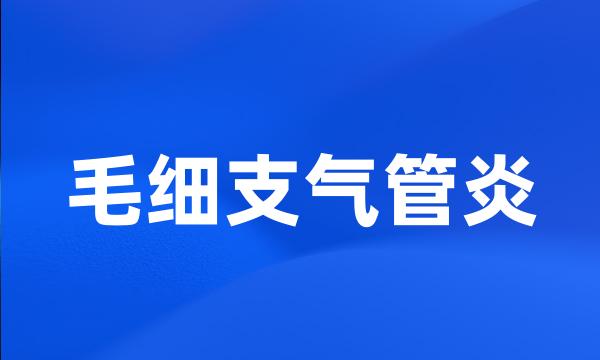毛细支气管炎
- 网络bronchiolitis;RSV;Capillary bronchitis
 毛细支气管炎
毛细支气管炎-
沙丁胺醇合并布地奈德雾化吸入治疗毛细支气管炎疗效的Meta分析
Nebulized salbutamol and budesonide for the treatment of bronchiolitis : a meta-analysis
-
目的:观察干扰素α鄄2b不同用药途径治疗毛细支气管炎的疗效。
Objective : To explore the therapy efficacy of bronchiolitis treatment using alpha-2b interferon .
-
毛细支气管炎病后的P物质和气道反应性检测与哮喘发病关系的研究
The relationship between substance P , airway reactivity and development of asthma after bronchiolitis
-
维生素K1治疗毛细支气管炎的实验研究
Treatment of acute bronchiolitis in rats with vitamine k_1
-
结果毛细支气管炎的病原体分析,呼吸道合胞病毒IgM抗体检测阳性率为43.0%。
Results Pathogenic analysis of bronchiolitis was conducted , with positive rate of RSV-IgM 43.0 % .
-
急性毛细支气管炎RBC免疫调节因子活性观察
Continuous Studies on the Activity of Red Cell Immune Regulating Factor in 33 Patients with Acute Bronchiolitis
-
RANTES启动子-403G/A基因多态性与呼吸道合胞病毒致毛细支气管炎的相关性研究
The association of the RANTES gene promoter-403G / A polymorphism with respiratory syncytial virus bronchiolitis
-
毛细支气管炎患儿尿白三烯E4测定的临床意义的研究
Clinical Significance of Urinary Leukotriene E4 in Children with Bronchiolitis
-
IL-13、SccAg与毛细支气管炎关系的研究
Study of the correlation between IL-13 , SccAg and bronchiolitis
-
结论:RSV毛细支气管炎急性期嗜酸粒细胞增多以后更易发生婴幼儿哮喘。
Conclusion : Eosinophilia at the time of RSV bronchiolitis may predicts the development of asthma in infancy .
-
血清Eotaxin的变化在毛细支气管炎和哮喘病中的作用和意义
The Meaning and Function of Eotaxin Expression Level in Bronchiolitis and Asthma
-
RSV毛细支气管炎患儿鼻咽吸出物IL-4、IL-12和IFN-γ水平变化及意义
The Changes of IL-4 , IL-12 and IFN - γ Levels in Nasopharyngeal Aspirates of Infants with Respiratory Syncytial Virus Bronchiolitis
-
目的:探讨婴幼儿毛细支气管炎(bronchiolitis,以下简称毛支)的多种电解质变化情况及其与病情的关系。
Objective : To investigate the variety of electrolyte in infants with bronchiolitis , the correlation between electrolyte and condition .
-
结论:痰液G-CSF检测是毛细支气管炎并发细菌感染的敏感性指标。
Conclusion : G CSF in NPS is a sensitive and feasible index to evaluate the bronchiolitis complicated with bacterial infection .
-
方法将确诊为毛细支气管炎的患儿77例随机分A、B2组。
Methods Divided 77 children with capillary bronchitis into the A ( 45 cases ) and B ( 32 cases ) group randomly .
-
呼吸道合胞病毒是婴幼儿急性下呼吸道感染最主要的病毒病原体之一,流行病和免疫学研究显示,RSV感染引起的毛细支气管炎和哮喘间有着密切的关系。
Respiratory syncytial virus ( RSV ) is the principal viral pathogen associated with acute lower respiratory infections in infants and children .
-
目的探讨大剂量静脉丙种球蛋白(IVIG)对预防毛细支气管炎发展成哮喘的临床疗效。
Objective To study the efficiency of large dose intravenous immunoglobulin ( IVIG ) in decreasing incidence of asthma following bronchiolitis .
-
婴幼儿毛细支气管炎血中TXB2、6-Keto-PGF(1α)变化的研究
A Study on Changes in Blood Thromboxane B_2 ( TXB_2 ) and 6-Keto-Prostaglandin Fla ( 6-Keto-PGF_ ( 1 α)) in Infantile Bronchiolitis
-
毛细支气管炎是一种婴幼儿较常见的下呼吸道感染性疾病,多由于呼吸道合胞病毒(RSV)感染引起。
Bronchiolitis , mostly caused by the infection of respiratory syncytial virus ( RSV ), is a common infection disease of the lower respiratory tract in children .
-
他们发现研究中的所有婴儿,如果患了小儿毛细支气管炎,是一种肺部感染,通常是由于呼吸道合胞病毒感染RSV,患哮喘的机率也升高。
They found that all babies in the study were at increased risk if they had bronchiolitis , a lung infection usually caused by respiratory syncytial virus or RSV .
-
结论:灭活卡介苗能刺激毛细支气管炎患儿IFN-γ生成增多,下调IL-4水平,诱导Th1细胞的优势分化,调节Th1/Th2平衡,可降低毛细支气管炎后婴幼儿哮喘的患病率。
Conclusion : Inactive BCG could stimulate the production of IFN - γ in Children with bronchiolitis , down-regulate IL-4 levels , induce the dominant differentiation of Th1 / Th2 and reduce the incidence .
-
方法:测定毛细支气管炎患儿治疗前后的D-二聚体(D-Dimer)、活化部分凝血酶时间(APTT)及抗凝血酶Ⅲ(AT-Ⅲ),并进行对比。
Methods : D-Dimer , activated partial thrombin time ( APTT ) and anti-thrombin ⅲ ( AT - ⅲ) levels were measured and compared in bronchiolitis before and after treatment with heparin .
-
呼吸道合胞病毒(RespiratorySyncytialVirus,RSV)是世界范围内普遍引起婴幼儿下呼吸道感染的主要病原体之一,几乎95%的幼儿在两岁之前都感染过RSV,还可以引起毛细支气管炎、肺炎、支气管炎。
Respiratory syncytial virus ( RSV ) is one of the major pathogens of lower respiratory tract infection in infants worldwide . Almost 95 % children are infected before age of 2 , cause bronchiolitis , pneumonia , bronchitis .
-
白介素-4基因C-33T多态性与呼吸道合胞病毒毛细支气管炎的相关性
Relationship between IL-4 / C-33T gene polymorphism and respiratory syncytial virus bronchiolitis
-
目的研究毛细支气管炎患儿外周血中单核细胞趋化蛋白4(MCP-4)、巨噬细胞衍生趋化因子(MDC)和白介素4(IL-4)水平的变化,探讨其临床意义。
Objectives To investigate the clinical value of monocyte chemoattractant protein-4 ( MCP-4 ), macro-phage-derived chemokine ( MDC ) and interleukin-4 ( IL-4 ) in serum of infants with acute bronchiolitis .
-
同时发现,RSV-IgE在患儿体内持续存在,这可能是RSV毛细支气管炎喘鸣患儿在病后数年中反复出现喘鸣的原因之一。
We also found RSV-IgE persisted a long time in the infants with RSV bronchiolitis , presumably playing an important role in recurrent wheezing after RSV infection for years .
-
目的探讨治疗婴幼儿毛细支气管炎的方法,观察α-2b干扰素(r-IFNα-2b)、布地奈德和沙丁胺醇综合治疗婴幼儿毛细支气管炎的疗效。
Objective To explore the treatment of infants bronchiolitis and observe the therapeutic effectiveness of interferon α - 2b , budesonide and salbutamol on infant bronchiolitis .
-
研究CysLTs在毛细支气管炎诊断及预后筛查哮喘高危儿的价值;为白三烯受体拮抗剂的临床应用治疗毛细支气管炎提供依据。
According to the study results , Cysteinyl leukotriene receptor antagonist may be used in the therapy of bronchiolitis .
-
方法用UniCAP全自动检测仪和皮肤点刺试验对243例喘息性疾病婴幼儿(毛细支气管炎、伴喘息的支气管炎或肺炎、婴幼儿哮喘)进行过敏原筛查和特异性IgE测定。
Methods The specific IgE test and allergens screening test were conducted in 243 infants and young children with whooping diseases including asthmatic bronchitis , asthmatic pneumonia and asthma by skin prick test and Pharmacia UniCAP test .
-
方法将RSV感染毛细支气管炎患者随机分为雾化吸入IFN-γ治疗组和对照组,观察治疗前后的临床疗效。
Methods 136 cases of RSV bronchiolitis were randomly divided into treatment group in which 70 cases were treated with INF - γ atomization inhalation and control group in which there were 66 cases . The clinical effects before and after treatment were observed .
